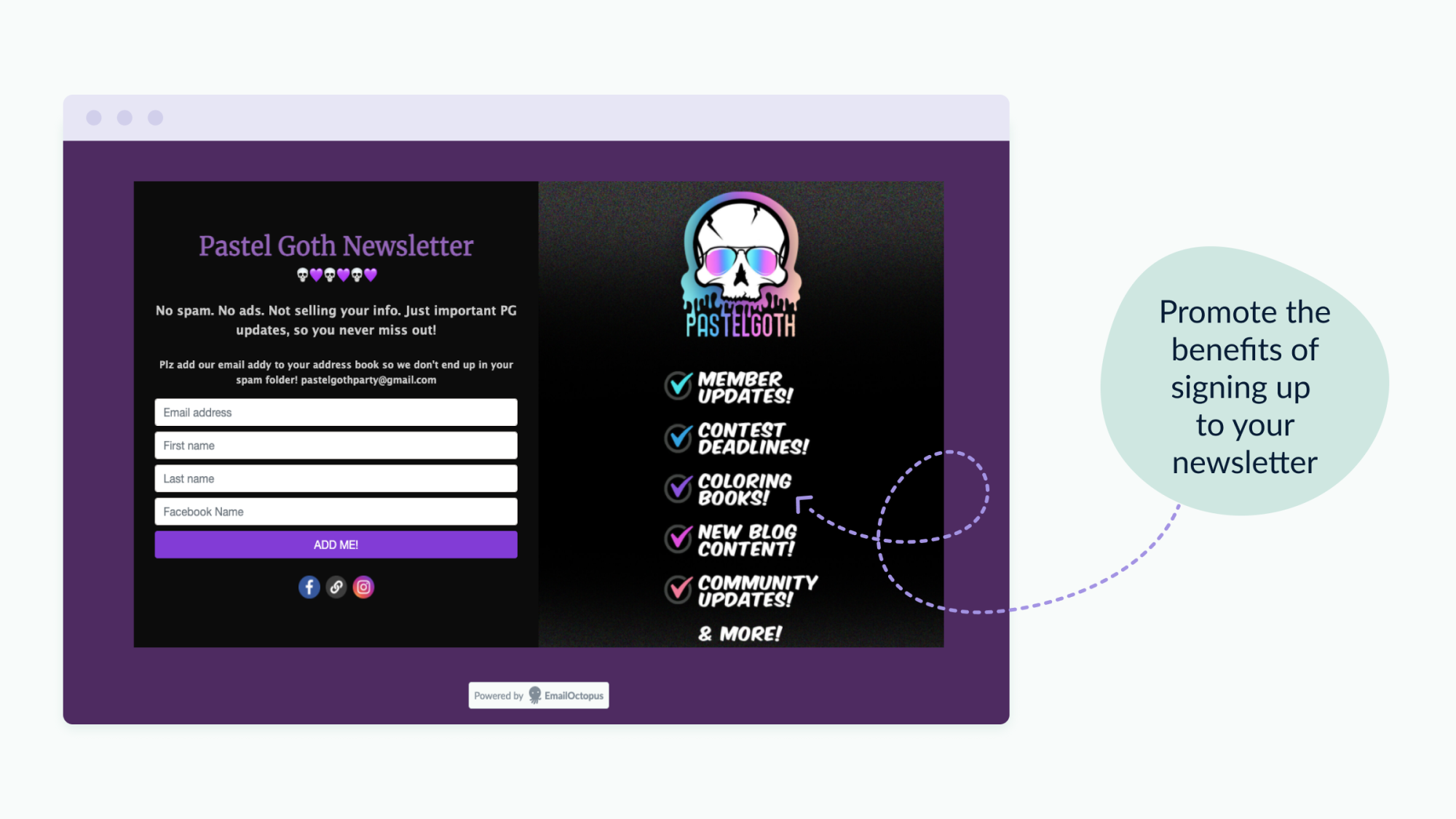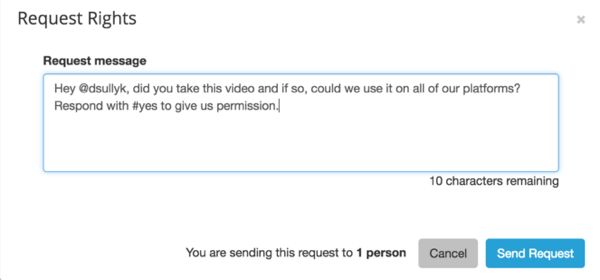User-generated content (UGC) offers brands a great way to promote their products while building relationships with customers.
Not only that, UGC has also been shown to boost conversion rates. Research from Yotpo shows that customers who view user-generated content before purchasing have a conversion rate of 5.6%, compared to just 2.1% for customers who did not see user-generated content.
This stat shows the effectiveness of UGC, but most brands solely use it in social media campaigns. However, this tactic can also be used to boost the performance of email marketing campaigns.
And in this article, we will look at the ways you can incorporate user-generated content in your email marketing, and we’ll dive deeper into why it is so effective.
Page Contents
What is user-generated content?
User-generated content refers to any form of unsponsored content that consumers create about a brand’s product or service across social networks. This content can be anything from images and videos, to posts, reviews and testimonials.
When you share a photo of a cookie you just bought from a local bakery, that’s UGC. When someone shares a video on Facebook about their favourite lawnmower, that’s UGC.

Most times, UGC is discovered. For example, when a brand comes across an Instagram post of a customer raving about their product. Other times, UGC is requested. For example, when a brand hosts a contest asking customers to share images of themselves using their product.
Regardless of how UGC is curated, it can be used by marketers to increase brand awareness, boost engagement, and also serve as social proof.
Why user-generated content is effective
Reports from Stackla show that consumers find user-generated content 2.4x more authentic than branded content. The same report stated that consumers find user-generated content 9.8x more impactful than influencer content when making purchase decisions.

But why do consumers prefer UGC to branded or influencer content? And why are more marketers including UGC in their marketing campaigns?
Let’s take a look.
UGC is trustworthy
People trust other consumers more than they trust brands. According to the Nielsen Consumer Trust Index, 92% of consumers trust earned media, like UGC, more than branded content.
Also, UGC serves as social proof. And when it comes to making purchase decisions, 97% of people will turn to other consumers to determine whether a product or service is worth the investment.
For centuries, word-of-mouth has been the most powerful marketing strategy. And with the rise of technology, user-generated content serves as a digital form of word of mouth. The best part is that social networks have made it possible for UGC to reach more people in a short period.
UGC is cost effective
Marketers do not have to spend money before they’re able to carry out a UGC campaign. As consumers create the content, all you have to do is find the best UGC and include the content in your marketing campaigns.
The only time there will be a cost is when brands run a contest with the sole purpose of collecting user-generated content. The cost of the campaign will depend on the prize to be given to the winners and whether you pay to advertise the contest.
Still, the cost of running a UGC campaign will be considerably cheaper than brands investing in photography of its products.
UGC has high ROI
According to a UGC stats report from everyonesocial, UGC-based ads get 4x higher click-through rates than brand content ads. Also, campaigns and websites that include UGC see 29% higher web conversions.
A good example of a UGC campaign with a high ROI is Coca-Cola’s ‘Share a Coke’ campaign.
Consumers were encouraged to find Coke drinks with their names on the bottle, then share images of themselves enjoying the drink using the hashtag #ShareaCoke.

Nearly 500,000 customers posted images to social media, with millions of people seeing the hashtag worldwide. Coca-Cola gained over 25 million new followers the year of the campaign and overall sales increased by 3 percent.
UGC is scalable
One of the biggest challenges that marketers face is consistently creating relevant and personalised content for consumers. In fact, 60% of marketers say that this is their biggest content marketing challenge.
UGC tackles this challenge.
Consumers themselves are the biggest content creators. There are millions of people sharing user-generated content across social media channels every day. This makes UGC a self-refilling source of authentic and trusted content. All marketers need to do is find this consumer-created content and share it with their audience.
And as long as a brand keeps delivering quality products or services, their well of consumer-created content will never run dry.
How to incorporate user-generated content in email campaigns
As we’ve seen, UGC can be a very effective marketing tactic. But how can marketers leverage user-generated content to boost the performance of their email marketing campaigns?
Here are two ideas on how to incorporate UGC in email.
Show off your customers’ photos
Visual content like photos and videos are the most common type of UGC. They’re also the most engaging and are a great way to show how real people are using your products.
Tip: Including video files in your emails might make it bulky and can reduce your email deliverability. It’s best to stick to photos.
What makes user-generated imagery so engaging is that viewers develop an emotional connection with the content. Consumer psychology research found that UGC helps consumers minimise their self-doubts, and feel a sense of community.
With branded images, marketers are trying to win consumers over, while UGC, on the other hand, brings audiences together. It creates the feeling of belonging, which according to psychologist Abraham Maslow is one of the basic needs that motivates behaviours.
So when satisfied customers share photos of your product on social media, take advantage of this and include these photos in relevant emails.
Look at this email from Nassau Paradise Island. First, they introduce their resort by sharing an image of a couple smiling, along with the hashtag #ItsAlwaysBeenBetter.

After the paragraph of text introducing their beach resort, they share images that real visitors to the beach have posted on Instagram and Facebook.

Recipients of the email see how beautiful the resort looks from the images posted by other users.
Typically, you will want to share photos of people being happy while using your product. Your audience will attribute the joy the customer in the photo is experiencing to your product.
For example, in the email advertising their resort, Nassau Paradise Island includes images of customers smiling and relaxing near the ocean. This inspires recipients who are looking for a fun and relaxed time to click on the “Learn More” button.

If the photos above were stock images and not UGC, would they have the same effect?
How UGC compares to stock imagery
The reality is that consumers have become inundated with stock images on the internet so they actively resist anything that feels and looks inauthentic. While stock photography libraries have an abundance of images, it can be painstaking finding the right images, especially if you want images to look authentic and unstaged.
Studies also show that user-generated content is more effective than stock content. Marketing Experiments ran an A/B test of their top-performing stock photo against a real photo of their customer to see which one performed better.

The test results showed that visitors who saw the image of the real customer were 35% more likely to sign up.
How SaaS brands can use UGC
Using user-generated images works especially well for ecommerce businesses and brands in the travel and hospitality industry where customers have physical items and locations to take photos of. However, the tactic can also be used by SaaS brands who can showcase what their users are creating with their software.
For example, in an email sent to users, EmailOctopus included examples of sign-up forms created by other users with their email marketing software. This shows other users what’s possible and inspires them to use the feature in EmailOctopus. This, in turn, increases product usage and engagement.

Include customer testimonials and reviews
UGC can also come in the form of customer testimonials and reviews, which you can include in your emails to vouch for the quality of your product or services.
When including reviews or testimonials in emails, choose the ones that show the value your product will add to the recipient’s life. It should tell the recipient that your product or service will solve a particular problem or satisfy a particular need that they have.
Here is an example from Outer in an email advertising their outdoor furniture. This is one of the great reviews they include in the email.

From this review, email recipients learn that the outdoor furniture is comfortable and easy to clean, stylish yet functional, and “outrageously” flexible.
Great customer reviews like this show your potential customers the value that your products deliver.
So don’t choose just any review – choose reviews that show your product or service in the best light.
And remember that user testimonials and reviews do not have to be just text-based. You can include images to show recipients that real customers are the ones that wrote the reviews and testimonials.
Here is another example from Outer on how to use both visual and written user-generated content together.

Here is another example from Brooklinen:

These reviews are great because not only do they show how comfortable Brooklinen’s sheets are, they are also amusing.
When possible, it’s always good to add humour to your marketing campaigns. In fact, a survey from Clutch shows that 53% of consumers say they remember and enjoy an advertisement if it is humorous.
How to collect UGC using contests
Some brands sell the kinds of products or services that naturally inspire customers to share photos on Instagram and other social media channels. But when you need more content than what’s available to you, running a contest is one of the best ways to collect UGC.
As part of the rules of the contest, simply ask your audience to share photos of themselves using your product for a chance of winning a prize.
Consumers love contests as it offers them a chance to win prizes from their favourite brands. But you don’t have to offer huge or expensive prizes for people to participate. A simple prize, like a discount on their next purchase, or a small, free gift can work equally as well.
You can promote your contest to your subscribers with a promotional email and build more awareness around the campaign. In the email, share the rules of the competition and the platforms where participants can share their images.
To improve the reach of your contest, it’s best to include a branded hashtag on social media posts. It also makes it easy for you to find all the images shared by participants.
Here is an example of a contest promoted via email by headphone specialist Aftershokz.

As part of the rules of the contest, participants were required to share a photo or video on Instagram, along with the branded hashtag #ShokzGames.
Hundreds of participants uploaded images of themselves participating in the five challenges. Here is an image of a user performing challenge number three of the #ShokzGames.

To inspire recipients to participate, in their email AfterShokz also included images of the prizes to be won.

Best practices to follow when using user-generated content
There are two essential things to keep in mind when using UGC in your campaigns.
Ask for permission before sharing
Before you share content created by your audience or regram UGC on Instagram, first ask for their permission. Send them a friendly message via their comments or DM saying how much you love their content and that you want to share it. Most customers will be happy to give you permission.
Here is a simple example of how to ask for permission from a user:

If you are running a contest, you can include a disclaimer in the contest description stating that you will be sharing the images on your marketing channels. This way, you won’t have to ask for permission from every participant.
Understand the legal restrictions when running promotions
When running promotions like contests, giveaways, or sweepstakes, you should be aware of the legal restrictions of the platform you are hosting on. This is to ensure that your promotion isn’t pulled from the platform. Or worse, you get suspended or banned.
Here is an example of the promotional guidelines for Instagram:

Wrapping up
User-generated content is a great way to create relevant and authentic content for your email marketing campaigns.
By using user-generated content in the form of customer photos, reviews, and testimonials, marketers can show recipients that their products and services are quality. Recipients who are on the fence will trust the brand more, which will translate into more sales.
So for your next email marketing campaign, include UGC in your content to make it more impactful, leading to more engagement, clicks, and higher revenues.
And once you’ve mastered the basics, check out these five ways to improve your user-generated content strategy.


No Comments
Leave a comment Cancel